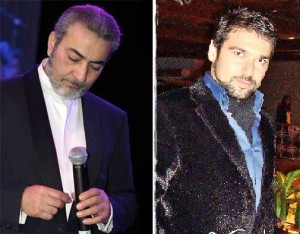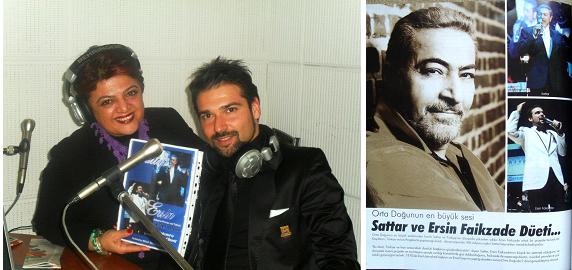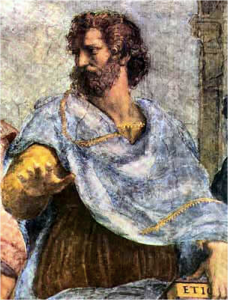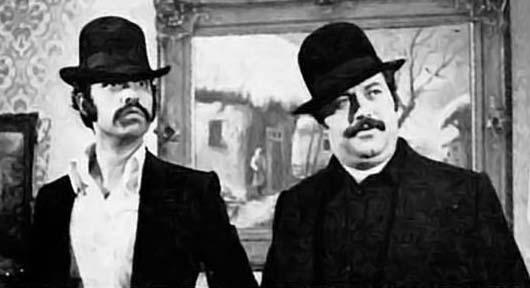As part of WAALM’s endeavour for Cultural Diplomacy, the institute has facilitated the artistic works in a duet by Iranian Meastro Sattar and Young Turkish Rising Star Ersin Faikzade singing the song “Simin Bari” in Turkish and Persian This is yet another expression of WAALM’s works to assist dialogue and understanding between civilizations (see for example WAALM’s Empower Africa Conference in April 7-10, 2010).
Sattar (left) and Ersin Faikzade (right) have lent their exemplary creativity and musical talents towards the initiative to re-awaken the long-standing and powerful cultural bonds between the Iranians and the Turks.
WAALM’s initiative has been a significant first step in re-awakening the deep-rooted cultural ties between Turks and Iranians (Persians, Kurds, Azaris, Lurs, etc.). The Iranians and Turkic peoples have a shared (yet unappreciated) civilization known as the Turco-Iranian or Persianate civilization – see for example the articles below (for more see here…)
- Turkic-Iranian Contact Areas: Historical and Linguistic Aspects (Edited by Lars Johansen and Christiane Bulut), Turcologica 62, 2006 (pdf).
- Victor H. Mair (2005), Contact and exchange in the ancient world, University of Hawaii University Press, pp. 142-149 – these pages discuss the historical Irano-Turkic contacts.
- Iran’s Reza Shah conversing in Turkish with Turkey’s Mustafa Kemal Attaturk (video)
- –جریان فرهنگی ادبی-همواره از ایران به عثمانی– (The Literary Influences of Iran upon the Ottoman Empire-in Persian posted by the Iran-Azar website).
Sattar and Ersin Faikzade singing Simin Bari in Turkish and Persian (Facilitated and Co-produced by WAALM). This is part of WAALM’s initiative to re-awaken the awareness of the strong and long-standing Turco-Iranian cultural ties known as the Turco-Iranian or Persianate civilization. Note that the video is also under post-production.
The song (Simin Bari) was originally composed by the late Iranian Singer and Songwriter Jamshid Sheybani (1922 – 2009). The first time this song was performed as a Turkish-Persian duet was in the 1970s by the Sheybani and the stunningly talented and beautiful Turkish singer, Emil Sayin.
Emel Sayin and the late Jamshid Sheybani singing “Simin Bari” in Turkish and Persian. The keyboards are performed by Maestro Anoushirvan Rohani. As noted by the WAALM diplomatic journal “…Emel Sayin’s visit was in fact due to a fund raising tour benefiting the victims of a devastating earthquake in Turkey and fostering cultural exchange”. Iranians and Turks often rush to each others’ aid during such calamities.
Iranian and Turkish musicians often travelled to each other’s countries to perform songs in Turkish and Persian, with songs often being adopted and adapted in both language. Sattar’s “Gol-e Sangam” for example was performed by Emel Sayin as well and remians a favorite song among the Turks in the 1970s.
The WAALM initiative in reviving Turco-Iranian cultural ties has been very well received by the Turks, as indicated by the Turkish media’s coverage of the Sattar-Ersin Faikzade duet.
At left is Radio Istanbul with their distinguished guest, the young and rising star, Ersin Faikzade and at right is Iranian legendary singer Sattar being cited by the Turkish press. Iranian-Turkish cultural ties predate and transcend the oft-used term “Middle East”, a term of 20th century Western origin.
Readers are also invited to consult WAALM’s short interview with Dr. Mosi Dorbayani on the role of music in fostering dialogue, diplomacy, cooperation and friendship at the international level.
Greek philosopher Aristotle (Hellenic: Ἀριστοτέλης, Aristotélēs)(384 BC – 322 BC) has noted that “Music directly represents the passions or states of the soul …gentleness, anger, courage, temperance…” (Politics, 8, 1340). Aristotle’s assertion is corroborated by modern research. Dr. Richard G. Pellegrino (Brain specialist & Researcher) has noted that music can “…trigger a flood of human emotions and images that have the ability to instantaneously produce very powerful changes in emotional states…take it from a brain guy…in 25 years of working with the brain, I still cannot affect a person’s state of mind the way that one simple song can…”.
Music is indeed a powerful learning medium, one which the Turks and Iranians share. It is remarkable that to this day, both peoples have a deep appreciation for the music and songs of each other. This is one facet of the long-standing Turco-Iranian civilization which spans from the borders of northern China to the shores of the Aegean Sea. It is a civilization that predates Islam, and one which has arisen from centuries of intermingling between Iranian and Turkic peoples.
The Yulduz Turdieva Musical Ensemble of Uzbekistan. The above video displays Uzbek singer Yulduz Turdieva singing in Persian accompanied by Uzbek musicians composing Classical Persian music. Western historians and writers often refer to the non-Arabian civilizations of the Near East, Central Asia, Iran, etc. as “Islamic” or “MIddle Eastern” . What is often not acknowledged is that there is a powerful and very unique culture shared by Iranian and Turkic peoples known as the Persianate or Turco-Iranian civilzation.
Striking are the cultural modes of expression among Iranians and Turkic peoples. These parallelisms can often be encountered in everyday situations.
Iranian actors Homayoun and Morteza Aghili depicting street-toughs known in Persian as “Jahel” in the movie “Topoli” (the Chubby one). Interestingly, the almost exact type of street-toughs can be seen in Turkey – similar attire (hat, shirt, jacket, shoes), gestures, conversing,
codes of conduct and even the minutiae of drinking tea, coffee or alcohol are strikingly parallel!
The Persian language is also witnessing a revival of interest in Turkey as seen below…
Teaching Persian in Turkey – Turkish instructor teaching Persian grammar to students. Note the enthusiasm of the instructor and the students. Iranians and Turks in fact share many common traits, notably in culture, music, foods, etc. While considerably downplayed by Western writers and “nationalists” on all sides, the reality is that Iranians and Turks are (at the very least) cultural cousins.







